Why My Light Not Working but Has Power?
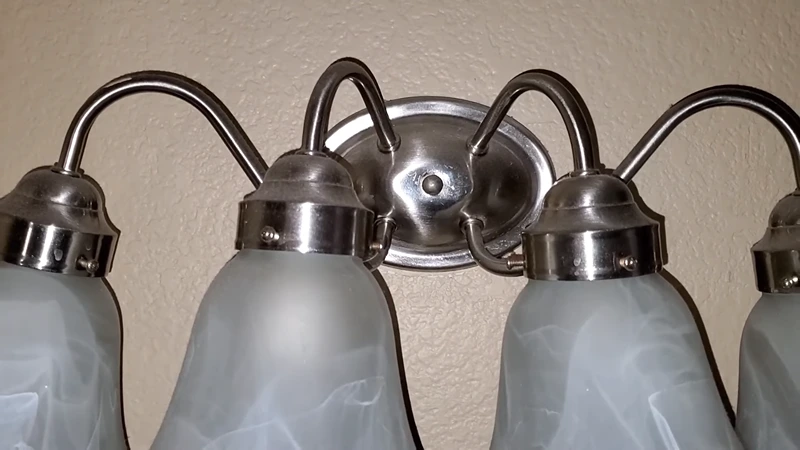
A light bulb that is not working even though it has power can be a frustrating problem to deal with. There are several potential reasons why this may happen, including power surges, cheap quality materials, overheating bulbs, turning the bulb on and off too often, incompatible light fixtures, loose connections, dirty fixtures, dimmer switch compatibility, and voltage fluctuations.
Understanding these causes can help you diagnose and fix problems with your light bulbs more effectively.
In this guide, we will take a look at each of these causes in more detail and provide step-by-step instructions on how to fix the issue, including the tools you will need. Whether you’re dealing with a single light bulb that won’t turn on or a series of fixtures that are not working, this guide will provide you with the knowledge you need to get your lights back up and running.
You'll Learn About
Why My Light Not Working but Has Power?
The main reasons why light not working having power are power surges, cheap quality materials, overheating bulbs, turning the bulb on and off too often, incompatible light fixtures, loose connections, dirty fixtures, dimmer switch compatibility, voltage fluctuations.
Power surges
A power surge occurs when there is a sudden increase in the electrical voltage flowing through the circuit. This can cause damage to the light bulb, including burning out the filament.
Cheap quality materials
If a light bulb is made with cheap quality materials, it may not be able to handle the normal amount of electrical current flowing through it. This can lead to overheating and burning out of the bulb.
Overheating bulbs
If a light bulb overheats, it may burn out soon. This can happen if the bulb is not designed to handle the amount of heat it is generating, or if the fixture in which it is installed is not properly ventilated.
Turning the bulb on and off too often
Repeatedly turning a light bulb on and off can also cause it to burn out sooner than expected. This is because each time the bulb is turned on, a small amount of the filament evaporates, which weakens the filament over time.
Incompatible light fixtures
If a light bulb is not designed to be used with a specific type of fixture, it may not work properly or may burn out prematurely. For example, using a LED bulb in a fixture that is not designed for LED bulbs can cause the LED to overheat and burn out.
Loose connections
If the light bulb is not securely screwed into the fixture, it may not make a good electrical connection, which can cause the bulb to stop working or flicker. This can happen if the fixture is old or worn, or if the bulb is not screwed in tightly enough.
Dirty fixtures
A dirty fixture can cause a light bulb to stop working, as the dirt and debris can create an insulation barrier between the bulb and the socket, preventing a good electrical connection. Additionally, dirt and dust can cause heat to be trapped inside the fixture, which can cause the bulb to overheat and burn out.
Dimmer switch compatibility
Some light bulbs are not compatible with dimmer switches, which can cause the bulb to stop working or flicker. This is because the dimmer switch changes the amount of electrical current flowing through the circuit, which can cause the bulb to overheat or burn out if it is not designed to handle the varying current.
Voltage fluctuations
Voltage fluctuations, which are small changes in the electrical voltage flowing through the circuit, can cause a light bulb to stop working or flicker. This can happen if the electrical supply is not stable, such as during a power outage or if there are power-hungry appliances on the same circuit.
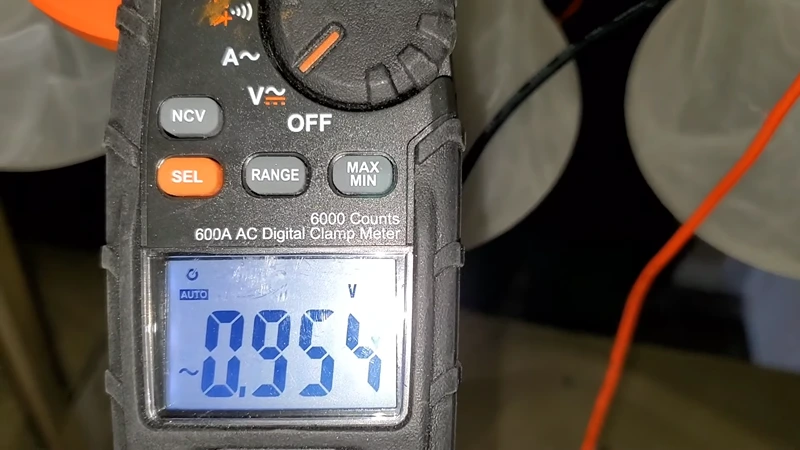
Voltage fluctuations can also cause damage to the electronic components of the light bulb’s base, making it unable to function.
There are many reasons why a light bulb may not work even though it has power. Some of the common causes include power surges, cheap quality materials, overheating bulbs, turning the bulb on and off too often, incompatible light fixtures, loose connections, dirty fixtures, dimmer switch compatibility, and voltage fluctuations.
Understanding these causes can help you diagnose and fix problems with your light bulbs more effectively. Always make sure to use the right type of light bulb for your fixture, keep the fixture and bulb clean, and use bulbs that are compatible with your dimmer switch, and check for any loose connections or voltage fluctuations to prevent any issues.
Power Surges
A power surge occurs when there is a sudden increase in the electrical voltage flowing through the circuit. This can happen for a variety of reasons, such as a lightning strike, a malfunctioning power transformer, or a problem with the power grid. When a power surge occurs, the increased voltage can cause damage to various components in the electrical circuit, including the light bulb.
In the case of a light bulb, the sudden increase in voltage can cause the filament inside the bulb to burn out prematurely. The filament is the thin wire inside the bulb that heats up and produces light when electricity flows through it. When the filament is exposed to a high voltage, it can become overheated and burn out.
Additionally, Power Surge also can cause damage to the electronic components on the light bulb’s base, making it unable to function as well. It also causes light bulbs to dim.
In summary, a power surge can cause a light bulb to stop working even though it has power because the increased voltage can burn out the filament or damage the electronic components on the bulb’s base, making it unable to function.
Cheap Quality Materials
Cheap quality materials can cause a light bulb to stop working even though it has power because the materials used to make the bulb may not be able to handle the normal amount of electrical current flowing through it. When a bulb is made with cheap quality materials, it may not be able to withstand the heat and stress generated by the electrical current, leading to overheating and failure of the bulb.
For example, if a light bulb is made with a filament that is not strong enough to handle the normal amount of electrical current, it can burn out prematurely. Similarly, if the glass used to make the bulb is not heat-resistant, it can become brittle and crack, causing the bulb to stop working.
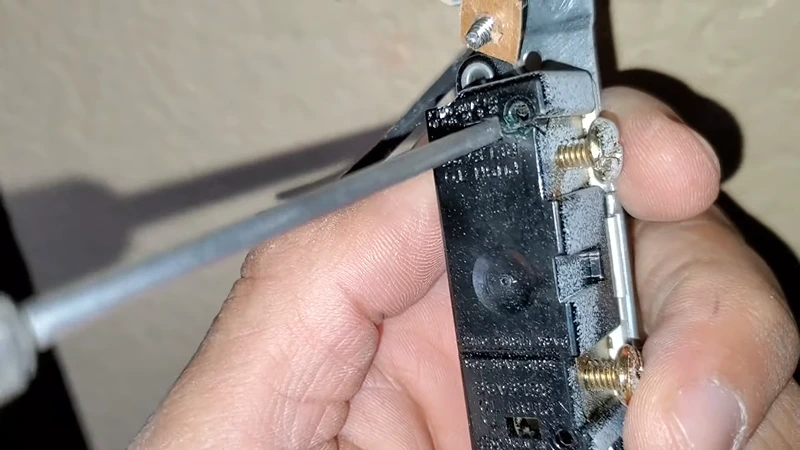
Additionally, the cheap base materials on the bulb can also cause issues, as they may not be able to make good contact with the light socket and can cause a poor connection, resulting in the light bulb not functioning properly.
In summary, cheap quality materials can cause a light bulb to stop working even though it has power because the materials may not be able to handle the normal amount of electrical current flowing through it, leading to overheating, burn out or poor connection issues.
Overheating Bulbs
Overheating bulbs can cause a light not working even though it has power because the increased heat generated by the bulb can cause damage to the filament or other internal components.
When a bulb overheats, the filament inside the bulb can become too hot and burn out prematurely. This can happen if the bulb is not designed to handle the amount of heat it is generating, or if the fixture in which it is installed is not properly ventilated. For example, a bulb inside a recessed light that is not ventilated properly can overheat and burn out.
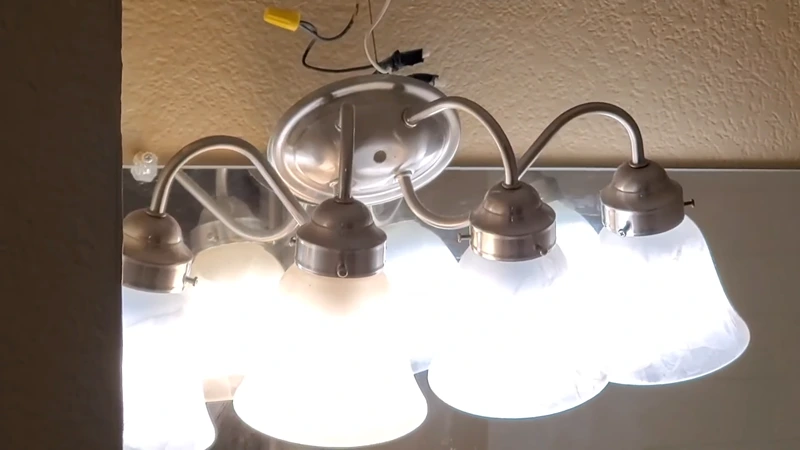
Additionally, overheating can cause the electronic components on the light bulb’s base to malfunction and fail, making the bulb unable to function.
Overheating can also cause the glass of the bulb to expand, which can cause the seal between the base and glass to break, leading to a poor connection and the bulb not working.
In summary, overheating bulbs can cause a light not working even though it has power because the increased heat generated by the bulb can cause damage to the filament, electronic components, or the base-to-glass seal, making the bulb unable to function.
Turning the Bulb on and Off Too Often
Turning a light bulb on and off too often can cause it to stop working even though it has power because each time the bulb is turned on, a small amount of the filament evaporates. Over time, this repeated evaporation weakens the filament, making it more likely to burn out prematurely.
When a filament is heated, it expands and when it cools down it contracts. This repeated expansion and contraction can cause stress on the filament and weaken it, making it more vulnerable to burnout. Additionally, each time the filament is heated, it loses a small amount of material, which makes it thinner and weaker over time.
Additionally, turning a light bulb on and off too often can cause damage to the electronic components on the light bulb’s base, such as the switch, making it unable to function.
In summary, turning a light bulb on and off too often can cause it to stop working even though it has power because the repeated expansion and contraction, filament evaporation, and damage to the electronic components can weaken the filament and make it more likely to burn out prematurely, or make the bulb unable to function.
How to Fix a Light Bulb Not Working but Has Power?
Step 1: Identify the problem
The first step in fixing a light bulb that is not working even though it has power is to identify the problem. Check for signs of damage to the bulb, such as a broken filament or a cracked glass. Also, check the fixture and surrounding area for any signs of damage or dirty, and check for any loose connections or flickering.
Step 2: Gather necessary tools
Depending on the problem, you may need a few basic tools to fix the issue. These may include:
- A ladder or step stool to reach high fixtures
- A screwdriver to remove the light bulb or tighten connections
- A electrical tester to check for voltage
Step 3: Check for power surges
If you suspect that a power surge may have caused the bulb to burn out, check your circuit breaker or fuse box to see if a breaker has tripped or a fuse has blown. If so, reset the breaker or replace the fuse.
Step 4: Check the bulb and fixture connections
If the bulb is not securely screwed into the fixture, or if the fixture is old or worn, the bulb may not be making a good electrical connection. Use a screwdriver to remove the bulb and re-install it, making sure it is screwed in tightly.
Step 5: Check for dirty fixtures
If the fixture is dirty, use a damp cloth to clean the fixture and the surrounding area. Make sure the fixture and the bulb are dry before reinstalling the bulb.
Step 6: Check for dimmer switch compatibility
If the light bulb is not working properly with a dimmer switch, check the packaging or the manual for the bulb to see if it is compatible with dimmer switches. If it is not, consider replacing the bulb with one that is designed to work with dimmer switches.
Step 7: Check for voltage fluctuations
Use an electrical tester to check for voltage fluctuations. If the voltage is fluctuating, it may be caused by a problem with the electrical supply or by power-hungry appliances on the same circuit. In this case, contact an electrician to fix the problem.
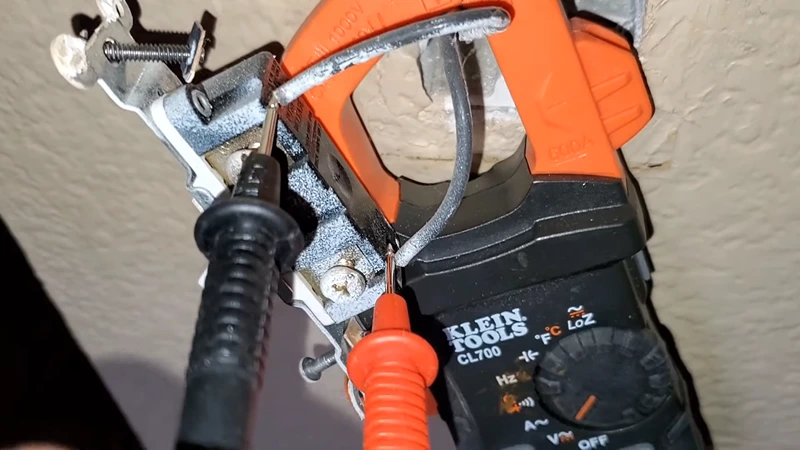
Step 8: Replace the bulb
If none of the above steps resolve the problem, the bulb may be damaged and needs to be replaced. Make sure to use the correct type of bulb for your fixture and check the packaging or manual for any compatibility issues.
In summary, to fix a light bulb that is not working even though it has power, you need to identify the problem, gather the necessary tools, check for power surges, check the bulb and fixture connections, check for dirty fixtures, check for dimmer switch compatibility, check for voltage fluctuations, and if none of the above steps resolve the problem, replace the bulb.
Why Does Lights Not Working Fuse Not Tripped?
A fuse is a safety device that is designed to protect the electrical circuit from damage caused by excessive current. When too much current flows through the circuit, the fuse melts, which breaks the circuit and prevents further damage.
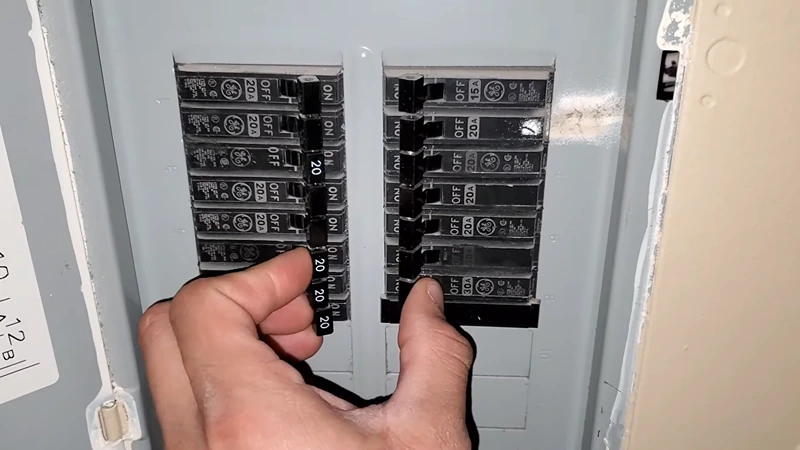
However, there are other reasons why a light bulb may not be working even though the fuse has not tripped.
Damaged or Burned Out
One possible reason is that the light bulb may be damaged or burned out. The filament inside the bulb may be broken, or the bulb may have a crack in the glass. This can cause the bulb to stop working, even though the fuse is still intact.
Not Securely Screwed
Another possible reason is that the light bulb may not be securely screwed into the fixture. If the bulb is not making a good electrical connection with the fixture, it may not work properly, even though the fuse is not tripped. Similarly, if the fixture is old or worn, it may not be able to make a good connection with the bulb, which can cause the bulb to stop working.
Dirty Fixture
A dirty fixture can also cause a light bulb to stop working. Dirt and debris can create an insulation barrier between the bulb and the socket, preventing a good electrical connection. Additionally, dirt and dust can cause heat to be trapped inside the fixture, which can cause the bulb to overheat and burn out.
Not Compatible
Additionally, some light bulbs are not compatible with dimmer switches, which can cause the bulb to stop working or flicker. This is because the dimmer switch changes the amount of electrical current flowing through the circuit.
It can cause the bulb to overheat or burn out if it is not designed to handle the varying current.
Voltage Fluctuation
Lastly, Voltage fluctuations, which are small changes in the electrical voltage flowing through the circuit, can cause a light bulb to stop working or flicker.
This can happen if the electrical supply is not stable, such as during a power outage or if there are power-hungry appliances on the same circuit.
Voltage fluctuations can also cause damage to the electronic components of the light bulb’s base, making it unable to function.
In summary, there are various reasons why a light bulb may not be working even though the fuse has not tripped. Some of these reasons include a damaged or burned out bulb, a loose or poor connection, a dirty fixture, dimmer switch compatibility issues, and voltage fluctuations.
Identifying the problem and taking appropriate action can help you fix the issue and get the light working again.
Problems, Reasons, and Solutions Table
| Problem | Reason | Solution |
|---|---|---|
| Light bulb not working | Power surge | Check circuit breaker or fuse box, reset breaker or replace fuse |
| Light bulb not working | Loose connections | Remove the bulb and re-install it, making sure it is screwed in tightly |
| Light bulb not working | Dirty fixtures | Clean the fixture and the surrounding area with a damp cloth, make sure the fixture and the bulb are dry before reinstalling the bulb |
| Light bulb not working | Incompatible with dimmer switch | Check the packaging or the manual for the bulb to see if it is compatible with dimmer switches, if not, consider replacing the bulb with one that is designed to work with dimmer switches |
| Light bulb not working | Voltage fluctuations | Use an electrical tester to check for voltage fluctuations, if found, contact an electrician to fix the problem |
| Light bulb not working | Cheap quality materials | Replace the bulb with a higher quality one |
| Light bulb not working | Overheating bulbs | Check the ventilation of the fixture, if poor, consider improving it, and make sure to use the right type of light bulb for the fixture |
| Light bulb not working | Turning the bulb on and off too often | Avoid turning the bulb on and off too often |
| Light bulb not working | Incompatible light fixtures | Use the right type of light bulb for the fixture |
Note: It’s important to note that there may be other factors that could cause a light bulb to not work, and these are just some of the most common causes.
Final Words
When a light bulb is not working even though it has power, there can be various reasons for the issue. Understanding the common causes such as power surges, cheap quality materials, overheating bulbs, turning the bulb on and off too often, incompatible light fixtures, loose connections, dirty fixtures, dimmer switch compatibility, and voltage fluctuations can help you diagnose and fix the problem.
By following the step-by-step instructions and using the proper tools, you can troubleshoot and repair a wide range of light bulb issues. Converting the light fixture from 4 to 3 might not help you.
Additionally, keeping the fixtures and bulbs clean, making sure to use the correct type of bulb for your fixture, and checking for any loose connections or voltage fluctuations can prevent any future issues.
Remember to always be careful when working with electricity and if you are not comfortable or confident with the repair, it’s always best to consult with a professional electrician.
